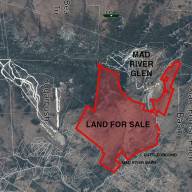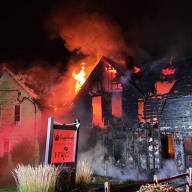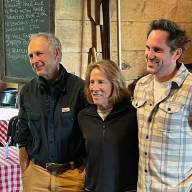By Stan Walker
On April 23, 2019, Warren adopted its updated Town Plan where it stated as one of its goals is to preserve the natural features and character of Warren. Over the last two years, Warren’s Planning Commission has undertaken the task of a complete zoning regulation rewrite in an attempt to implement the town’s vision for the future. Many thanks should go out to members of the planning commission for their time commitment to this effort.
One of the major components of this rewrite is the implementation of changes to the current zoning bylaws in order to preserve the biodiversity and our rural character, one of the main reasons many of us happily call The Valley our home.
The state of Vermont is a critical corridor in the Temperate Broadleaf Forest that stretches from the Tug Hill Plateau west of the Adirondack Mountains, across the mountains, around Lake Champlain, up the state of Vermont into Canada, and then east up to the tip of Cape Briton off of Nova Scotia and includes the northern portions of New Hampshire and Maine. This is very significant and Vermonters should be proud as this is believed to be the largest Temperate Broadleaf Forest in the world.
Vermont is a critical corridor for not only wildlife but also for plant species. Vermont’s corridor is considered one of five priority connections in this forest and has been classified as high irreplaceability – high threat. As the Champlain Valley experiences more and more parcelization and fragmentation due to population growth, this has closed down wildlife corridors in that area and pushes their corridors further and further to the east. This growth, along with the growth we are experiencing in The Valley, increases the need and responsibility to preserve not only our human visual landscape but also helping to preserve the biodiversity pathways through our state.
There are many forested tracks of land throughout The Valley and Warren but what is of significant importance is how they are connected. The Warren Conservation Commission over the last 10 to 15 years has been conducting many studies on conserving critical lands and mapping the location of critical and/or important local wildlife corridors within our town that need protection. Some of these findings have been considered in the new regulations. One area that will be needing additional attention are the small corridors that line individual lots that are still critical for wildlife movement, safety, feeding and nesting.
The current regulation for the Rural District is a 1-acre lot size which will change to a 5-acre lot size. For too long Vermont has depended upon Vermont state wastewater and water regulations to control and limit development. The lack of development guidance for our visual and natural resources in our current zoning regulations is easily evident as one drives up out of Warren and views some the more recent development patterns going up the Roxbury Gap Road.
It must be noted though that there are many homes on that stretch that did develop their sites quite nicely to fit into their natural environment and are only revealing themselves through lights at night. The new regulations’ intentions are for homeowners and builders to be more conscious of their impact on the entire ecosystem and to take steps to try to mitigate any harmful impacts and integrate their home into the natural ecological systems. This will include opening up a far smaller area for the homes, taking into consideration the visual impact off-site, and limiting the intrusion onto the rest of their property by using acceptable ecological forest management practices.
As one reviews these changes, I am sure there will be individuals who will have the opinion that they go too far with limiting individual rights for their property. But there are some who could put forth just as valid an argument that perhaps they do not go far enough in protecting our town heritage moving forward into the future.
This change in lot size will affect many people. This changes our own 4.5-acre site previously zoned 1 acre with development potential into a non-conforming lot. I must say that I am in full support of changes to protect our rural character even though it does impact us. I personally believe that the larger lot sizes will not necessarily decrease our land value but may preserve it by protecting our rural character and the wildlife around us. While I am in support of the intent, there are many areas that I feel warrants further discussion and explanations from and with the planning commission.
The Warren Planning Commission is expecting to have its final zoning regulation draft available for the public prior to the public hearing(s) scheduled for mid-March, after which the commission will submit its final recommendations to the select board for approval. I highly recommend that all Warren residents review this document as it will affect land rights for years to come. I also believe that everyone who has either areas of concerns or supports certain changes to show up for the public meeting and express their opinions. One planning commission member stated at one meeting (this is a generalization) – if only one or two people express their opinions and are not in support of what we are doing I likely will not change my mind at all. But if a group of people arrive and express the same thoughts, then I would definitely have to give our conclusions more thought with possible changes. This is why you should not rely upon your neighbor or friends to present your point of view. You need to show up in person in order to ensure that everyone’s opinion is heard.
Another important consideration about this document is that every item was not unanimously endorsed. The planning commission members did hold a variety of opinions, the document, therefore, only represents a consensus. Your opinions could make a difference.
Thank you for your time, see you at the public meetings. Stay safe and healthy.
Walker lives in Warren.











